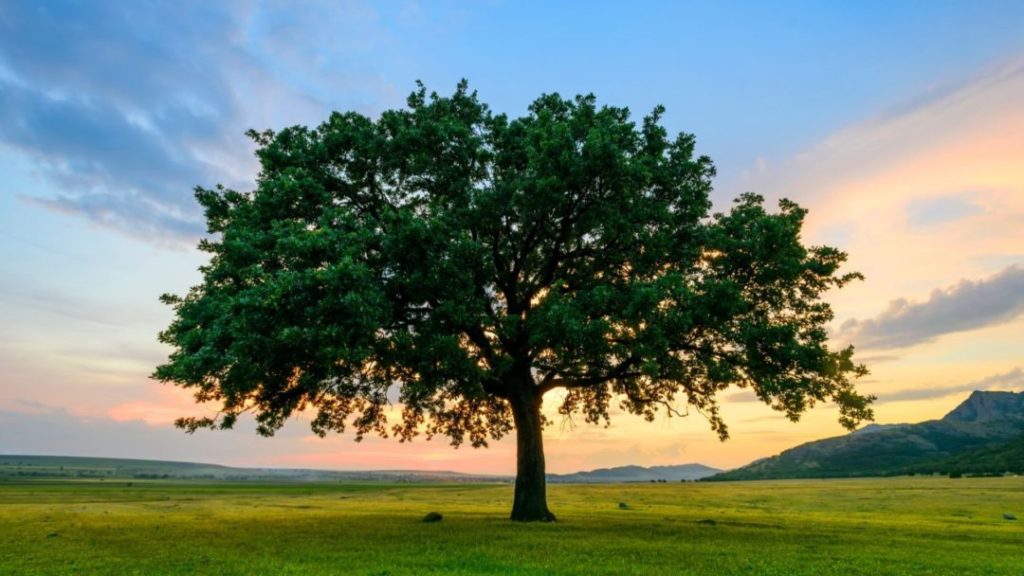Trees are wonderful, life-giving, magical, legendary, spooky, and just plain interesting. Think of the Ents from The Lord of the Ring, the dryads of Narnia, Robin Hood’s Sherwood Forest, Harry Potter’s Whomping Willow, and Bilbo Baggins’s Party Tree.
See below for the science of trees, tree stories, tree poems, tree art projects, mathematical trees, tree houses, and more.
Table of Contents
CELEBRATE TREES!
 |
National Arbor Day usually falls on the last Friday in April – but some states base Arbor Day on their best tree-planting times. See When is Arbor Day in your state? |
| Visit the Arbor Day Foundation website for affordable trees, an informational tree guide, resources for connecting kids with nature, forest replanting programs, a history of the holiday, and more. | |
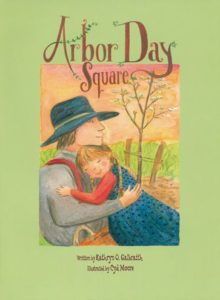 |
In Kathryn Galbraith’s Arbor Day Square (Peachtree Publishers, 2010), a small Nebraska prairie town has houses and barns, a store, a church, and a school with desks for seventeen children – but no trees. The townspeople, among them Katie and her father, raise money to order 15 saplings from back East and plant them in the town square. Time passes and the trees grow bigger and taller; Katie grows up, marries, and has a little daughter – who helps her grandfather plant new trees. An appendix explains the origin of Arbor Day, first celebrated in Nebraska in 1872. For ages 4-8. |
| As of 2013, the United Nations declared March 21 to be the International Day of Forests. From the Huffington Post, see background information and a photo-illustrated list of 21 Reasons to Celebrate the Value of Trees. |
TREE PLANTERS
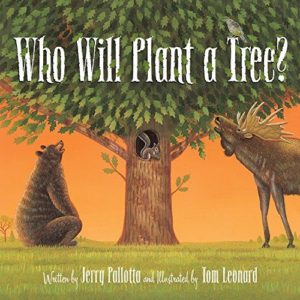 |
Jerry Palotta’s Who Will Plant a Tree? (Sleeping Bear Press, 2010) is a picture-book account of a lot of surprising tree-planters, among them squirrels, bears, geese, ants, and dolphins. For ages 3-8. |
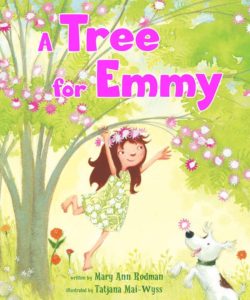 |
In Mary Ann Rodman’s A Tree for Emmy (Peachtree Publishers, 2009), Emmy wants her own pink-flowered mimosa tree like the one that grows in her grandmother’s yard – and that Gramma claims is a lot like Emmy herself, “stubborn and strong and a little bit wild.” To her dismay, no garden store sells mimosa trees – but finally she finds the solution: a little sapling to transplant and nurture on her own. For ages 4-8. |
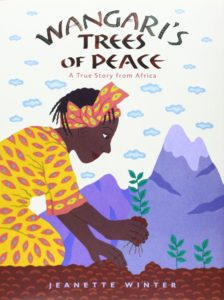 |
By Jeanette Winter, Wangari’s Trees of Peace (Houghton Mifflin Harcourt, 2008) is a picture-book biography of Kenyan environmentalist Wangari Maathai, who won the Nobel Peace Prize for her tree-planting program. For ages 4-8. |
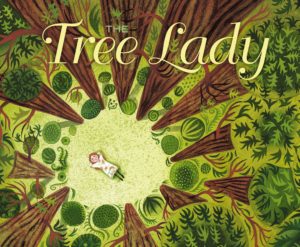 |
By H. Joseph Hopkins, The Tree Lady (Beach Lane Books, 2013) is the picture-book story of tree-loving activist Kate Sessions, who grew up in California in the 1860s, went to college to study science, and finally moved to the desert town of San Diego, where she established a nursery and populated the town and surrounding area with trees. A great story about a little-known heroine for ages 5-8. |
 |
Jean Giono’s The Man Who Planted Trees (Chelsea Green, 2007) is the story of Elzeard Bouffier who spent his life planting one hundred acorns a day – through both World Wars I and II – in a desolate stretch of southern France, eventually transforming the region into a green woodland. A hopeful account of one person making a great difference for ages 12 and up. |
| Read The Man Who Planted Trees online. | |
| Project Plant It is elementary-school tree planting program. Included at the site are detailed lesson plans, a tree reading list, varied activities for kids, interactive games, and more. You can also request a free tree through the program, though these aren’t always available. |
